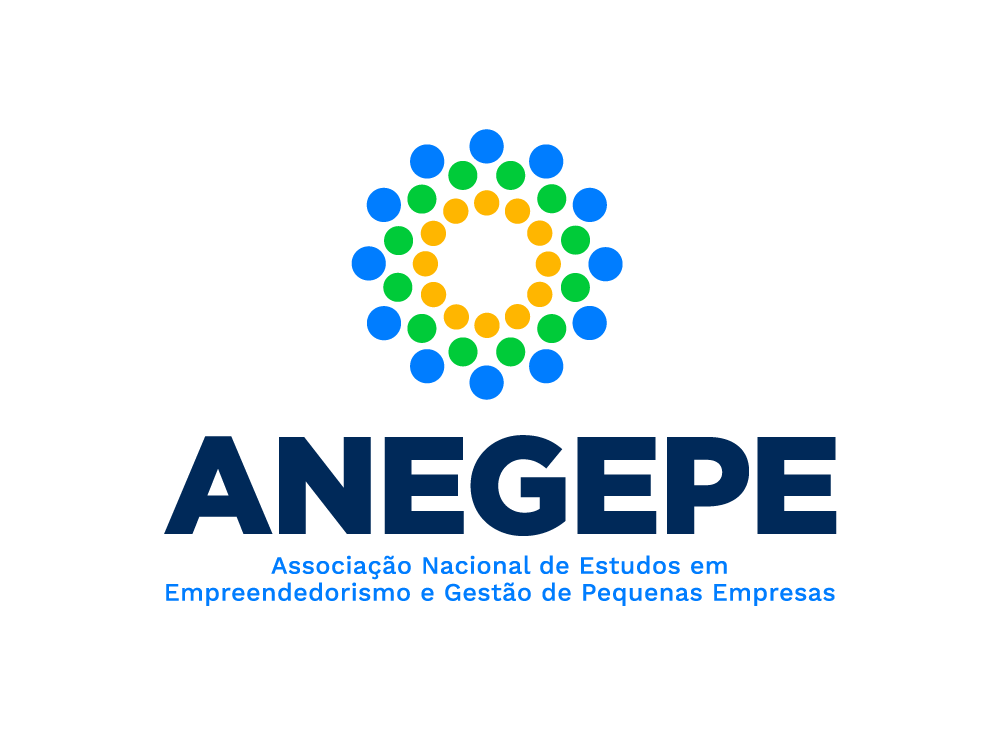Esforços de Inovação de Pequenos Negócios na América Latina
DOI:
10.14211/regepe.v10i1.1957Palavras-chave:
Esforços de inovação, Dinâmicas institucionais, Reformas institucionais, Reversões institucionais.Resumo
Objetivo do estudo: Analisar os efeitos das dinâmicas institucionais nos esforços de inovação de pequenos negócios na América Latina. Metodologia/abordagem: Utilizamos uma base de dados do Banco Mundial com 11.446 pequenos negócios latino-americanos, que responderam questões relativas aos seus esforços de inovação (de produto, de processo e investimentos em pesquisa e desenvolvimento) nos últimos três anos. Para avaliar o efeito das dinâmicas institucionais (reformas e reversões), foram captados dados do Índice de Liberdade Econômica. Principais resultados: Concluímos que, nos pequenos negócios de países latino-americanos, os esforços de inovação podem estar mais ligados à preparação para o enfrentamento de um ambiente institucionalmente ineficiente do que ao aproveitamento dos ambientes que tiveram uma melhora institucional. Contribuições teóricas/metodológicas: Os movimentos desses pequenos negócios possivelmente se relacionam à busca por sobrevivência em um ambiente incerto, contrariando, assim, a suposição de que haveria mais esforços de inovação quando o ambiente fosse propício a ela. Relevância/originalidade: Este estudo é valioso por possibilitar a análise das dinâmicas institucionais, que podem levar a determinados tipos de resposta nos esforços de inovação de pequenos negócios. Contribuições sociais/para a gestão: este estudo também demonstra se a formulação de reformas institucionais pode impactar os pequenos negócios, no contexto latino-americano, sendo relevante, desse modo, para o desenvolvimento de políticas públicas.
CLASSIFICAÇÃO JEL: O32
Downloads
Referências
Abed, M. G. T., & Gupta, M. S. (2002). Governance, corruption, and economic performance. Washington, DC: International Monetary Fund.
Acemoglu, D., & Robinson, J. A. (2008). Persistence of power, elites, and institutions. American Economic Review, 98(1), 267-93. https://doi.org/10.1257/aer.98.1.267
Alence, R. (2004). Political institutions and developmental governance in sub-Saharan Africa. The Journal of Modern African Studies, 42(2), 163-187. https://doi.org/10.1080/12265080701694512
Alonso, J. A., & Garcimartín, C. (2013). The determinants of institutional quality. More on the debate. Journal of International Development, 25(2), 206-226. https://doi.org/10.1002/jid.1710
Arundel, A., Bordoy, C., & Kanerva, M. (2007). Neglected innovators: How do innovative firms that do not perform R&D innovate. Results of an analysis of the Innobarometer, 9.
Ayyagari, M., Demirgüç-Kunt, A., & Maksimovic, V. (2011). Firm innovation in emerging markets: the role of finance, governance, and competition. Journal of Financial and Quantitative Analysis, 46(6), 1545-1580. https://doi.org/10.1017/S0022109011000378
Banalieva, E. R., Cuervo-Cazurra, A., & Sarahi, R. (2018). Dynamics of pro-market institutions and firm performance. Journal of International Business Studies, 49(7), 858-880. https://doi.org/10.1057/s41267-018-0155-7
Barasa, L., Knoben, J., Vermeulen, P., Kimuyu, P., & Kinyanjui, B. (2017). Institutions, resources and innovation in East Africa: A firm level approach. Research Policy, 46(1), 280-291. https://doi.org/10.1016/j.respol.2016.11.008
Barney, J., & Arikan, A.M. (2001). The resource-based view: origins and implications. In Hitt, M. A., Freeman, R. E., Harrison, J. S. (Eds.), Handbook of Strategic Management (pp. 124-188). Oxford: Blackwell Publishers.
Bhattacharya, U., Hsu, P. H., Tian, X., & Xu, Y. (2017). What affects innovation more: Policy or policy uncertainty? Journal of Financial and Quantitative Analysis, 52(5), 1869-1901. https://doi.org/10.1017/S0022109017000540
Bradley, S. W., McMullen, J. S., Artz, K., & Simiyu, E. M. (2012). Capital is not enough: Innovation in developing economies. Journal of Management Studies, 49(4), 684-717. https://doi.org/10.1111/j.1467-6486.2012.01043.x
Bräutigam, D. A., & Knack, S. (2004). Foreign aid, institutions, and governance in sub-Saharan Africa. Economic development and cultural change, 52(2), 255-285.
Crespi, G., & Zuniga, P. (2012). Innovation and productivity: evidence from six Latin American countries. World development, 40(2), 273-290. https://doi.org/10.1016/j.worlddev.2011.07.010
Cuervo-Cazurra, A., & Dau, L. A. (2009). Structural reform and firm exports. Management International Review, 49(4), 479-507. https://doi.org/10.1007/s11575-009-0005-8
Dau, L. A. (2012). Pro‐market reforms and developing country multinational corporations. Global Strategy Journal, 2(3), 262-276. https://doi.org/ 10.1111/j.2042-5805.2012.01033.x
Dau, L. A. (2013). Learning across geographic space: Pro-market reforms, multinationalization strategy, and profitability. Journal of International Business Studies, 44(3), 235-262. https://doi.org/10.1057/jibs.2013.5
Dau, L. A., & Cuervo-Cazurra, A. (2014). To formalize or not to formalize: Entrepreneurship and pro-market institutions. Journal of Business Venturing, 29(5), 668-686. https://doi.org/10.1016/j.jbusvent.2014.05.002
Freel, M. S. (2005). Patterns of innovation and skills in small firms. Technovation, 25(2), 123-134.
Glaeser, E. L., La Porta, R., Lopez-de-Silanes, F., & Shleifer, A. (2004). Do institutions cause growth?. Journal of economic Growth, 9(3), 271-303. https://doi.org/10.1023/B:JOEG.0000038933.16398.ed
Goedhuys, M. (2007). Learning, product innovation, and firm heterogeneity in developing countries; Evidence from Tanzania. Industrial and Corporate Change, 16(2), 269-292. https://doi.org/10.1093/icc/dtm003
Goedhuys, M., Janz, N., & Mohnen, P. (2013). Knowledge-based productivity in “low-tech” industries: evidence from firms in developing countries. Industrial and Corporate Change, 23(1), 1-23. https://doi.org/10.1093/icc/dtt006
Goedhuys, M., & Sleuwaegen, L. (2010). High-growth entrepreneurial firms in Africa: a quantile regression approach. Small Business Economics, 34(1), 31-51. https://doi.org/10.1007/s11187-009-9193-7
Goedhuys, M., & Veugelers, R. (2012). Innovation strategies, process and product innovations and growth: Firm-level evidence from Brazil. Structural change and economic dynamics, 23(4), 516-529. https://doi.org/10.1016/j.strueco.2011.01.004
Greif, A. (2006). Family structure, institutions, and growth: the origins and implications of western corporations. American economic review, 96(2), 308-312. https://doi.org/10.1257/000282806777212602
Hair, J., Babin, B., Money, A., & Samouel, P. (2005). Fundamentos de métodos de pesquisa em administração. Bookman Companhia Ed.
Henisz, W. J. (2000). The institutional environment for economic growth. Economics & Politics, 12(1), 1-31. https://doi.org/10.1111/1468-0343.00066
Ireland, R. D., Hitt, M. A., & Sirmon, D. G. (2003). A model of strategic entrepreneurship: The construct and its dimensions. Journal of management, 29(6), 963-989. https://doi.org/10.1016/S0149-2063(03)00086-2
Kafouros, M., Wang, C., Piperopoulos, P., & Zhang, M. (2015). Academic collaborations and firm innovation performance in China: The role of region-specific institutions. Research Policy, 44(3), 803-817. https://doi.org/10.1016/j.respol.2014.11.002
Kamau, P., & Munandi, I. (2009). Innovation in the Kenyan Clothing Sector and Its Impact on Employment and Poverty Reduction. Institute for Development Studies, University of Nairobi, Nairobi, Kenya.
Kannebley Jr., S., Porto, G. S., & Pazello, E. T. (2005). Characteristics of Brazilian innovative firms: An empirical analysis based on PINTEC – industrial research on technological innovation. Research Policy, 34(6), 872-893. https://doi.org/10.1016/j.respol.2005.04.003
Kaufmann, D., Kraay, A., & Mastruzzi, M. (2011). The worldwide governance indicators: methodology and analytical issues. Hague Journal on the Rule of Law, 3(2), 220-246. https://doi.org/10.1017/S1876404511200046
Lee, K., & Kang, S. M. (2007). Innovation types and productivity growth: Evidence from Korean manufacturing firms. Global Economic Review, 36(4), 343-359. https://doi.org/10.1080/12265080701694512
Mahoney, J. T. (1995). The management of resources and the resource of management. Journal of business research, 33(2), 91-101. https://doi.org/10.1016/0148-2963(94)00060-R
Nelson, R. R., & Nelson, K. (2002). Technology, institutions, and innovation systems. Research policy, 31(2), 265-272. https://doi.org/10.1016/S0048-7333(01)00140-8
North, D. C. (1990). Institutions, Institutional Change and Economic Performance. Cambridge, UK: Cambridge University Press.
North, D. C. (1991). Institutions. Journal of economic perspectives, 5(1), 97-112.
OECD. (2005). Oslo manual: Guidelines for collecting and interpreting innovation data (3rd ed). Paris: OCDE.
Olson, M., Sarna, N., & Swamy, A. V. (2000). Governance and growth: A simple hypothesis explaining cross-country differences in productivity growth. Public Choice, 102(3-4), 341-364. https://doi.org/10.1023/A:1005067115159
Papazoglou, M. E., & Spanos, Y. E. (2018). Bridging distant technological domains: A longitudinal study of the determinants of breadth of innovation diffusion. Research Policy, 47(9), 1713-1728. https://doi.org/10.1016/j.respol.2018.06.006
Rosenberg, N. (2010). Why do firms do basic research (with their own money)? In Studies On Science And The Innovation Process (pp. 225-234). Stanford University, USA: World Scientific. https://doi.org/10.1142/9789814273596_0011
Sirmon, D. G., Hitt, M. A., & Ireland, R. D. (2007). Managing firm resources in dynamic environments to create value: Looking inside the black box. Academy of management review, 32(1), 273-292. https://doi.org/10.5465/amr.2007.23466005
Solleiro, J. L., & Castañón, R. (2005). Competitiveness and innovation systems: the challenges for Mexico’s insertion in the global context. Technovation, 25(9), 1059-1070. https://doi.org/10.1016/j.technovation.2004.02.005
Szogs, A. (2008). The role of mediator organisations in the making of innovation systems in least developed countries: evidence from Tanzania. International Journal of Technology and Globalisation, 4(3), 223. https://doi.org/10.1504/IJTG.2008.020328
Tolstoy, D. (2009). Knowledge combination and knowledge creation in a foreign‐market network. Journal of Small Business Management, 47(2), 202-220.
Trevino, L. J., Thomas, D. E., & Cullen, J. (2008). The three pillars of institutional theory and FDI in Latin America: An institutionalization process. International Business Review, 17(1), 118-133. https://doi.org/10.1016/j.ibusrev.2007.10.002
Wang, J. (2018). Innovation and government intervention: A comparison of Singapore and Hong Kong. Research Policy, 47(2), 399-412. https://doi.org/10.1016/j.respol.2017.12.008
Wang, C. C., & Lin, G. C. (2012). Dynamics of innovation in a globalizing china: regional environment, inter-firm relations and firm attributes. Journal of Economic Geography, 13(3), 397-418. https://doi.org/10.1093/jeg/lbs019
Williamson, O. E. (2000). The new institutional economics: taking stock, looking ahead. Journal of economic literature, 38(3), 595-613. https://doi.org/10.1257/jel.38.3.595
World Bank. (2019). Enterprise Surveys. Recuperado de http://www.enterprisesurveys.org/data
Wu, J., & Park, S. H. (2019). The role of international institutional complexity on emerging market multinational companies’ innovation. Global Strategy Journal, 9(2), 333-353. https://doi.org/10.1002/gsj.1166
Downloads
Publicado
Métricas
Visualizações do artigo: 1451 PDF downloads: 295 PDF (English) downloads: 116
Como Citar
Edição
Seção
Licença
Copyright (c) 2021 Christian Daniel Falaster, Priscila Rezende da Costa

Este trabalho está licenciado sob uma licença Creative Commons Attribution 4.0 International License.
Autores que publicam nesta revista concordam com os seguintes termos:
- O(s)/A(s) autor(es)/autora(s) autorizam a publicação do texto na revista;
- A revista não se responsabiliza pelas opiniões, ideias e conceitos emitidos nos textos, por serem de inteira responsabilidade de seus autores/autoras;
- Autores/autoras mantêm os direitos autorais e concedem à revista o direito de primeira publicação, com o trabalho publicado sob a Licença CC BY 4.0
, que permite o compartilhamento do trabalho com reconhecimento da autoria e publicação inicial nesta revista;
- Autores/autoras são permitidos e encorajados a postar seu trabalho (Versão submetida, Versão aceita [Manuscrito aceito pelo autor/autora] ou Versão publicada [Versão do registro]) online, por exemplo, em repositórios institucionais ou preprints, pois isso pode levar a trocas produtivas, bem como a citações anteriores e maiores de trabalhos publicados. A REGEPE pede como condição política para os autores/autoras que indiquem/vinculem o artigo publicado com DOI. Veja o Efeito do Acesso Livre.















